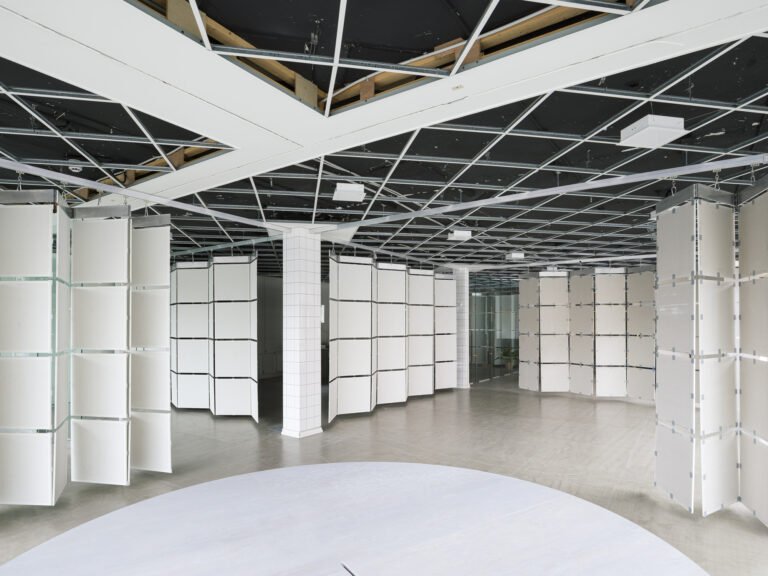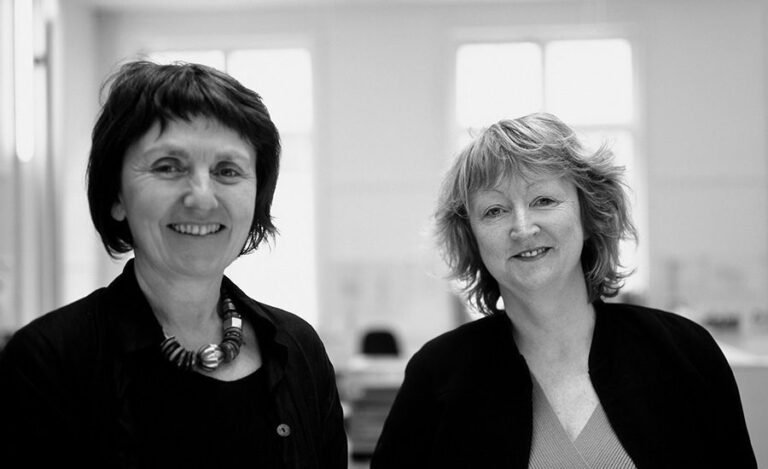z-one architects clusters mushy light-wells with luminous middle in nantong
a masterplan in nantong by z-one
nantong, a chinese city north of shanghai, has seen the completion of an urban agricultural park designed by z-one architects. the emerging studio — focusing on experimental architecture in rural china — realized the project in just four months from design concept to final completion. the sculptural work marks one of the team’s earliest project, as the practice had only been founded in 2020.
this building, defined by a cluster of soft light-wells, is one of three others of the overall masterplan — this ‘comprehensive service center’ which takes the name ‘gather grain into granary,’ is accompanied by an ‘exhibition hall of rural life,’ and a public restroom renovation.
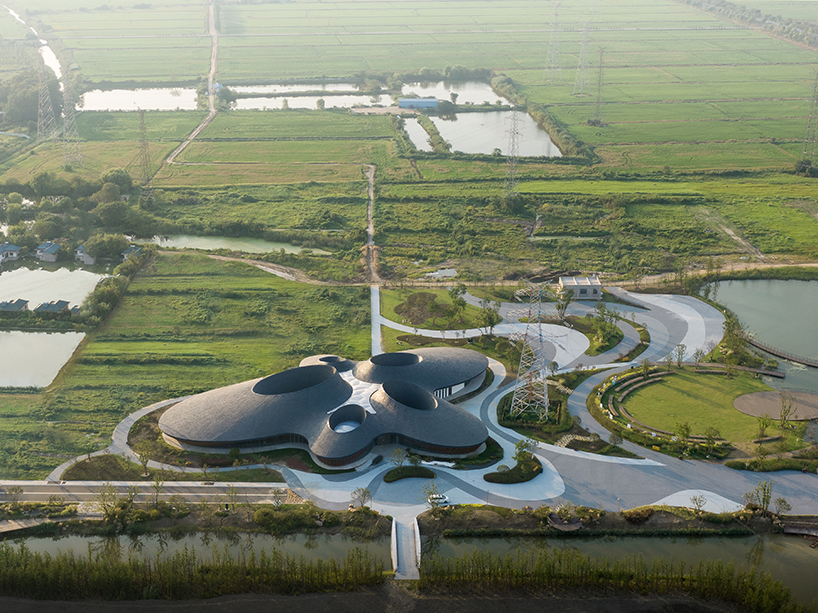
aaerial view
a threshold between rural and urban
z-one architects (see here) situates its ‘comprehensive service center’ along the entrance area of its nantong park. the team notes that the prominent position allows for visitors to perceive the whole park. further, the project serves as a threshold, or transition between urban and rural experience, without missing the reflection and reconstruction of contemporary architectural language.
the comprehensive service center ‘gather grain into granary’ takes shape as a collection of five large warehouse spaces, whose softened forms are built with a structure of combined steel and timber. the work gathers the functions of a field library, an exhibition space, a studying space, a dining space, and a multi-function hall for flexible programming.
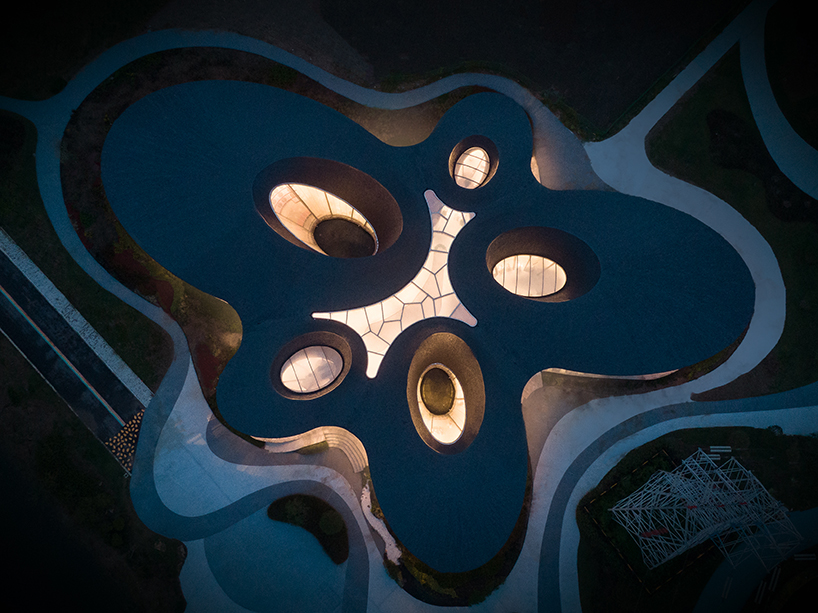
aerial view of softened forms and translucency
the irregular roof of nested light-wells
the design team at z-one architects creates internal ‘light wells’ in every core space from the nantong structure’s points of intersection. each light well affects the natural light in a unique way, lending a range of lighting conditions, inviting the visitor to recognize a new sense of awareness of the natural surroundings.
the architects at z-one apply ‘dimension reduction’ to most of the free-form surface during the design process, which greatly reduced the amount of special-shaped steel and wood structure and also the engineering difficulty. at the same time, the problem of laying tiles in large quantities on the irregular curved roof lent a creative solution.
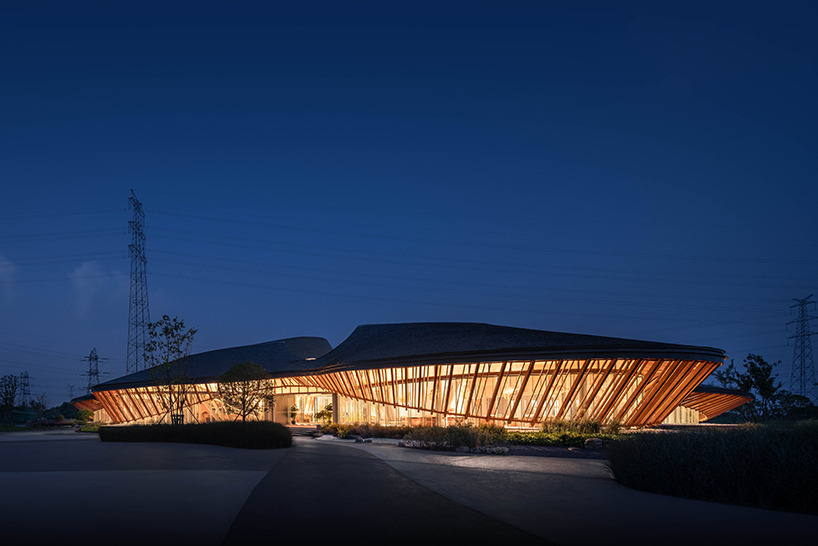
night view
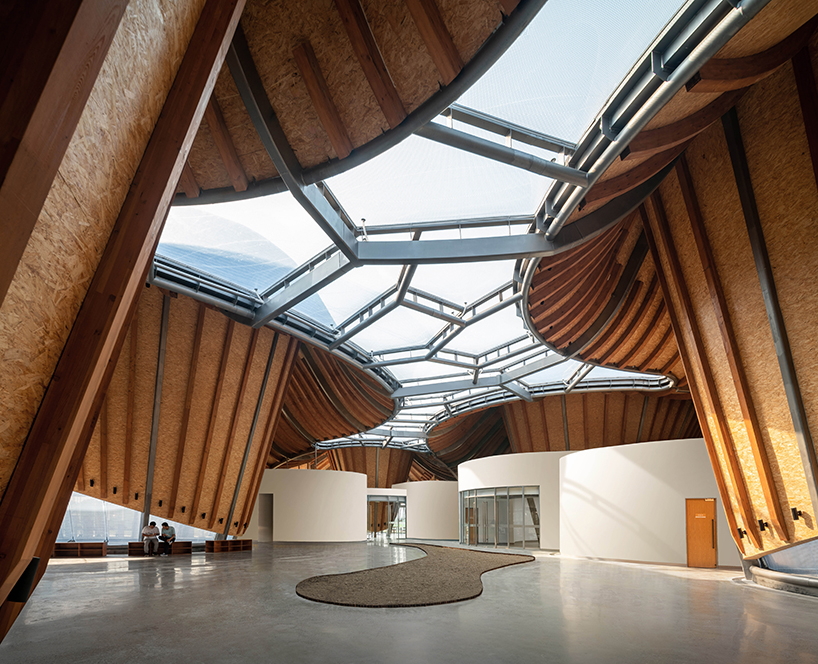
interior view
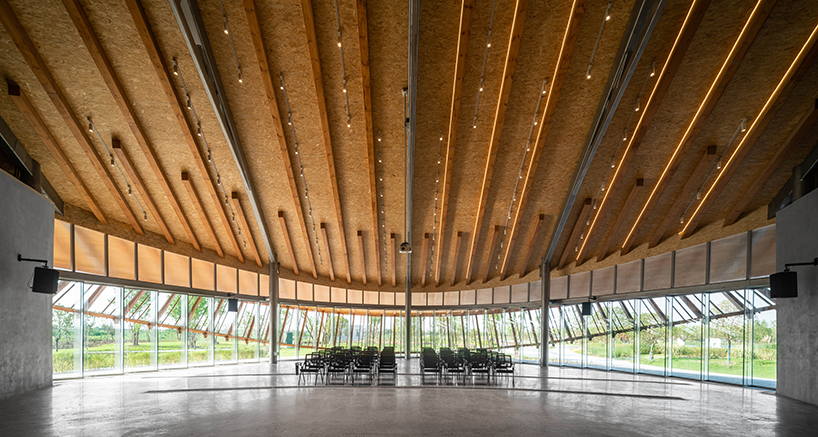
interior view


